- Home
- Patricia Cornwell
Quantum Page 3
Quantum Read online
Page 3
The ultimate exchange program and perfect synergy. Our two agencies combining resources, including technologies, weapons, equipment and vehicles. But mostly good people who have something to offer and learn, and Fran tops the list. Were it not for what happened when Easton was three, I have no doubt she’d be back at Hampton full time by now.
She may very well be their chief had she not gone into a stall, headed nowhere in more ways than one, hiding her problem from almost everyone while raising a precocious child with her on-and-off-again husband. Not Tommy’s fault, by the way. Why he’s still with her, it’s hard to say, and compared to her, I seem uncomplicated. Single and childless at 28. Living at home for the past three years after transferring out of the air force and into NASA.
My special sauce is aviation safety and aircraft control systems, and when I’m not in uniform, so to speak, my day to day is consumed by all sorts of activities that aren’t routine for most police investigators. What Fran considers rather mind-withering preoccupations such as writing algorithms for flight simulators, test piloting autonomous aircraft (drones), gathering data from my faithful crew of crash dummies at the gantry.
Or testing an exploratory spacecraft in one of our High-Intensity Radio Frequency (HIRF) labs or anechoic chambers before sending the next Cassini probe into the solar system. It’s not unusual at NASA for people to have different jobs with different directorates and divisions or with private industry. While I work full time as a test pilot and aerospace engineer for the Dynamic Systems and Control Branch, I’m also a captain for NASA Protective Services, in charge of cyber investigations. Explaining why I’m crouching before a submarine hatch at the moment, inside a concrete airlock below sea level.
“Maybe moisture caused a false alarm.” Fran repositions herself behind me, making sure she can see what I’m doing while watching the door we came through a few minutes ago.
“No way.” I look up at the reflective infrared system mounted in a corner at the top of the wall near the hatch with its thick layers of yellow paint and rash of rust.
As I noted with the other RIRs, the pyroelectric lens is safely behind glass, the entire unit protected by a tough waterproof case that doesn’t appear to have been damaged or compromised.
“All of them look exactly the same as they did when I was here yesterday,” I remind Fran. “When I was doing the systems analysis here in 1111-A that you managed to boycott as usual. But let’s not forget I also was next door in 1110 after that, taking the complaint about the alleged stolen badge. I don’t like the coincidence, if I’ve not said it enough. In fact, you know how I feel about coincidences.”
“I don’t see the connection.”
“The Yellow Submarine tunnel between 1110 and 1111 is the connection. And you don’t see it because you don’t want to.”
“What I see is a false alarm, and I’m thinking if the detector’s circuit board was exposed to condensation and some of the components got corroded . . . ?” Fran suggests what she wants to be true. “Couldn’t that do it?”
“Nope. Because like I said, it’s working now. The analyzer read all sensors loud and clear, not picking up anything unusual in the area. Had there been a malfunction in this motion detector or any other, I would have been alerted that the sensor was off line.”
Instead, I got an emergency tone similar to those that sound on my phone when there are severe weather warnings, missing children, mass murder and mayhem in the greater Tidewater area of Virginia. This was as I was winding up the presentation to our center directorate. Meaning I had quite the audience when an app on my phone alerted me that there may be a problem, a potentially serious violation in an underworld where NASA keeps a scary quantum secret.
The Yellow Submarine hatch is a potential portal into the heart and soul of our government and beyond, and not a day goes by that the threat isn’t on my mind.
But times exactly like what we’re facing right now are when our cyber security is most at risk for a breach, and any adversary worth his salt knows it.
If I learned nothing else while working military investigations in Colorado Springs, it’s never to make assumptions. Or skip a step. Or be in too big of a hurry to clear a scene or conduct a thorough interview. Stuffing my used purple nitrile exam gloves into a pocket, I pull on fresh ones in the off chance I might figure out later that I should be worried about DNA on door handles and locks.
Stretching my fingers like a safecracker limbering up, I turn the dial, focusing on how many spins to the right or left. Nothing written down. Never is when it comes to codes and combinations I don’t want others to know. That’s what memory is for, and with a turn of the big brass wheel, I release steel bolts as thick as sausages. Heaving open the massive door, I’m careful not to pull too hard and smash myself between the casement and the wall.
Staring into the maw, unevenly illuminated and hot as an oven, hearing the rush of blowing air. And I swing one leg through, ducking under, instantly slammed by heat and humidity that are suffocating.
“Come on.” I peer back at Fran, holding out my hand, helping her through. “Careful.” I point out slimy water flowing along a narrow path through asbestos-wrapped pipes, conduits, and the rusting fins, fans and tube plates of heat exchangers.
“Holy mother of God!” she protests, and I feel the heat prickle my skin, the air filling my lungs as hot as Death Valley.
“I don’t need to go in very far, and we’re definitely not staying long,” I can reassure her of that much. “Just one area in particular I want to take a peek at. Where we tied in to the grid yesterday.”
It’s routine to ensure redundancy when facing an emergency such as a blizzard or a hurricane, the node enabling us to uplink via satellite to our sister research center, NASA Ames in Silicon Valley. They have a quantum key distribution and a quantum computer to go with it, and linking East Coast to West gives Langley a backup should we find ourselves blown away or under 8 feet of water.
But it also makes NASA’s telecommunication system less secure. As Carme and I like to say, the more links in a chain, the higher the probability that the chain will be compromised or broken. The more doors to your house, the more likely the wrong person will enter.
00:00:00:00:0
“YOU STAY right here by the hatch, which must remain open and in line of sight at all times,” I tell Fran, who doesn’t need convincing. “I’d prefer we don’t get locked inside here . . .”
“Oh Jeez . . .”
“Don’t worry, there are emergency phones every 200 feet . . .”
“Not close enough!”
“Trust me, we’re not going to end up down here resorting to cannibalism.”
“What?”
Never mind, I don’t say out loud as I pick my way through dripping concrete and hulking rusty metal for as far as I can see, finding nothing off-nominal, as we say in NASA speak. Not one thing abnormal as I carefully step through shallow puddles scummy like pond water. Dodging thick steam pipes wrapped in fraying silvery asbestos that I work hard not to disturb in any way. Estimating the ambient temperature is 46 Celsius, or 115 degrees Fahrenheit, and if the humidity were much higher, it would rain.
Already I’m overheated, my pulse picking up, but not about to unzip or take off my leather jacket. At least it offers some protection should I have a close encounter of the scalding kind, and most assuredly I’m careful with my hands. Tucking them out of harm’s way in my jacket pockets, and thank goodness for my hard hat, or I might have knocked myself out on the pipe elbow I didn’t see coming a few seconds ago.
“Don’t go too far! I’m not gonna save your sorry ass!” Fran yells from the hatch. “Jeezzz-us criminy, it’s hot! What the hell are you looking for?”
“I’ll explain when I’m done,” I remind her loudly, but it’s not exactly true, can’t tell h
er but so much.
Clunking my hard hat on whatever’s low hanging, I continue to scan a concrete ceiling festooned with black cables and a pileup of PVC and metal tubing. Pinpointing the familiar galvanized steel conduit newer than the rest, following it like the yellow brick road to Oz as I yell to Fran that the target’s in sight.
“So is heat stroke!” yelling back.
Evading more hanks of cables gathered in thick bundles, I step around a dead mouse near groundwater pouring out of a copper pipe brown like an old penny. Counting how many caged ceiling lights I’ve passed. Two so far. Reassured by the third up ahead, where I was yesterday in preparation for the storm and other critical events about to unfold that have been keeping me awake at night for months.
Long before bad weather and government obstructions were a thought, I’ve been trying to tell those who count that we’re poised for the perfect storm of a cyberattack if we’re not careful. Prompting me to be down here for many hours yesterday, in and out as the heat allowed, running a systems analysis on Fiber-Optic Distribution Box 001.
Or FOD-1, as those of us in the know call the node that as of yesterday is uplinked to NASA Ames’s supercomputer center in Silicon Valley, making sure we have that backup plan. Because government shutdowns don’t stop astronauts from needing supplies or conducting a scheduled Extravehicular Activity, EVA. Pronounced E-V-A and better known as a spacewalk, a major headache of one is scheduled for tomorrow at 0700 Greenwich Mean Time (GMT). Or 2:00 a.m. on the East Coast. Less than 10 short hours from now, two US astronauts will install a top secret quantum machine parading as a science experiment.
During the EVA, they’ll attach this node to a remote platform outside the International Space Station, where quantum research is ongoing in its Cold Atom Lab. I’m just the telerobotics officer who will be sitting next to Rush Delgato at Langley’s Mission Control when he talks the astronauts through the installation. But at oh-dark-hundred I’ll be ready should he need me for technical assistance, and in a perfect world this wouldn’t be going on right now.
Given a choice, I’d prefer we weren’t hooking up a quantum node on the Space Station’s truss at the same time a resupply rocket is launching from our Wallops Flight Facility on the coast of Virginia. It’s too darn much at once, each event a colossal vulnerability, which is why I’m down here in this tunnel. Making sure no one has been tampering with the pole-mounted FOD-1 cabinet, thick stainless steel, about the size of a hotel refrigerator.
Next to it in a locked mesh rack is a switchboard, and it’s from here that we can monitor NASA’s telecommunications network. Meaning that systems engineers and cyber ninjas like me come down here rather often to run tests, verifying that parameters are at the correct levels. That’s what I did yesterday before giving the green light to connect all critical NASA infrastructures such as directorate emails and videos. Rather frighteningly similar to turning on Wi-Fi and logging on to the internet with a device you don’t want hacked. Better hope someone up to no good doesn’t outsmart your firewalls and encryption.
These days it could be some 12-year-old in China who breaches international cyber security in the ultimate way, and quantum computing will only make the apocalyptic possibilities endless. It may very well be a kid who destroys our planet as if it’s some virtual reality game. But I hope not. It’s what I’m here to prevent as sweat runs into my eyes and an internal alarm begins to sound. My body is sending me warnings. It won’t be long before I’ll stop perspiring entirely and start getting chills.
My mouth is dusty, as dry as paper, my eyes burning as I flip up the shielding for the FOD-1 keypad. Fail-safe with old-style metal buttons in the event the power should go out, and I enter my code. So far, so good. No indication anything’s been tampered with until I notice the fat steam pipe directly to my left, the crusty black drops and drips of what looks like blood on the tattered asbestos cover. I didn’t see this when I was in here yesterday, and I’m pretty certain I would have.
It’s ingrained in me to notice the morbid hieroglyphics of violent encounters and other disasters, whether it’s aircraft, crash dummies or humans, and this bloodlike spatter wasn’t here when I last was. Whatever the explanation, my overriding concern is that no one should come within a mile of the FOD-1 node without my knowledge and consent. Even Rush has to let me know if he’s coming down here, and I set my gear bag on a dry area of the tunnel’s concrete floor.
I begin digging for the most basic of crime scene paraphernalia that I carry pretty much everywhere. Swabs. A small bottle of sterile water. More gloves, always nitrile because acrylonitrile butadiene synthetic rubber is hypoallergenic and won’t melt. Plus, the expected surgical masks, shoe covers, various evidence buttons, envelopes and bags and so on. For bigger jobs requiring special lights, crime scene tape, tarps, chemicals and cameras, I keep a large field case locked up in the back of my truck.
But there’s no need for that, and I root around for a permanent marker, then the stickers that look like miniature rulers. Jotting today’s date on one to use as a labeled scale for photographs, I place it on top of the fraying-asbestos-wrapped pipe. Centering the label under what may be blood. Hoping the loose insulation is far enough away from the pipe itself that any potential DNA wasn’t completely degraded by heat.
At around 190 degrees Celsius, or 374 Fahrenheit, the game is over. Gloves off, I wipe down my phone with an alcohol pad, and capture images and video of the flaky blackish drops. Fresh gloves, and I begin to swab, noting that the white cotton tips turn a deep reddish brown. Consistent with blood, sure enough, I think but don’t say out loud.
“What are you doing down there?” Fran’s voice sounds from the open hatch door.
But I don’t answer as I seal each swab inside a separate clear plastic evidence envelope. A precaution that most likely won’t matter, similar to jotting down a license plate number when someone is a menace on the road. Probably nothing. But then again, you never know when you might wish you’d bothered.
Mission accomplished, and it’s back through the airlocks and up the claustrophobic stairwells, the going steeply uphill and harder than before. But not to Fran. She’s like a horse racing to the barn. Exploding out the rear door of 1111. Boiling into the parking lot, and it’s emptied considerably since we arrived barely an hour ago.
“Oh, thank God Almighty!” she gushes, her breath fogging out.
“Better zip up your coat,” I suggest.
The temperature is a nippy 11 degrees Fahrenheit. Or −11.6667 Celsius, to be precise. Because I am that. Precise to a fault. Despite my efforts not to show it or my other annoying quirk of doing instant calculations involuntarily in my head. Not that I have only two annoying quirks. Carme will tell you I enjoy an embarrassment of riches when it comes to idiosyncrasies.
“Watch where you step,” I warn, my breath streaming out like smoke as I keep up my scan for the insidious sheen of black ice I noticed earlier. “Over there, and over there.” Pointing out danger zones. “And there.”
“Oh great,” Fran mumbles. “I’ll break my neck. That’ll be next.”
She continues to blame me for all that’s treacherous in the world as I jam my hands into my pockets, beginning to shiver. I don’t know why it seemed like a good idea this morning to forgo my goose-down coat and instead head out of the house in a vintage leather jacket with no lining. Well, I do know. I wanted to look nice, do something special for the briefing at hand.
General Melville hasn’t seen me wear the WWII flight jacket since I left his command in Colorado Springs. I thought it would mean something to him. But truth be told, he never mentioned it. I’d describe him as polite but impersonal, and I touch my right index finger and thumb together, lightly rubbing the scar.
00:00:00:00:0
HIDING evidence before Dick and the others got there.
Tucking and th
rowing things away, insanely tidying as if it mattered. As if I could hide the mistake I made in an unguarded moment. Blood tracked everywhere in chaotic patterns, and the more I tried to clean it up, the worse it got. Shamed that such a thing could happen on my watch.
“Unlike you, I have to pay attention, Sisto,” Carme drinking beer with me in the barn, and I wish I hadn’t told her. “If I’m sloppy and unfocused for even one nanosecond? My ass gets shot out of the sky,” she’s saying, the two of us at a workbench, messing around with sensors and multimode handheld lasers. “Maybe this time you actually learned a lesson about what happens when you get in one of your dreamy quantum states, being all over the place in that spinning head of yours.”
Yes, I learned something, I don’t say out loud. Not about to tell her, our parents or anyone that I no longer trust myself the way I did. That ability was ruined by carelessness. By emotionality, and Carme is right. Had it been her, it might not have been survivable.
4
THE SETTING SUN smolders blood orange through winter-bare trees, backlighting the former Lunar Landing Research Facility looming starkly against the distant horizon.
More commonly known as the gantry, it’s 73 meters (240 feet) high, 122 meters (400 feet) long, and mainly used these days to conduct pendulum-swing drop tests of cargo planes, Unmanned Aerial Systems (drones), spacecraft and most recently a passenger jet. Several weeks before that, it was various autonomous urban taxis and flying cars, and a crew capsule destined for the moon and back.
Some dirt landings. Others in the water. Each scenario more stressful than the last, with fewer resources and more at stake. All to say that the massive red-and-white A-frame steel structure and its outbuildings near the disgusting-smelling steam plant are my home away from home for lots of reasons. At least 20 if we’re talking about my faithful crew of bruised and battered crash dummies stored in a hangar over there. Requiring me to drop by regularly. As if they’re my patients or kids (yes, I’ve named them).

 Blow Fly
Blow Fly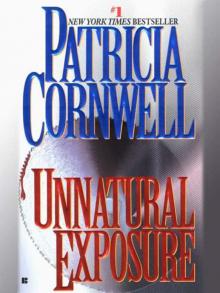 Unnatural Exposure
Unnatural Exposure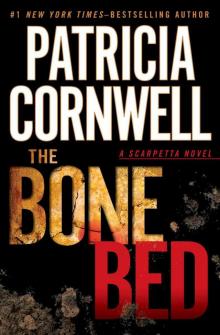 The Bone Bed
The Bone Bed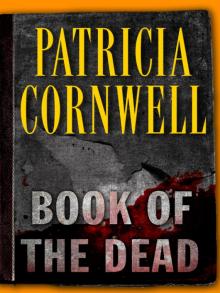 Book of the Dead
Book of the Dead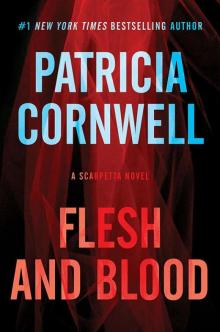 Flesh and Blood: A Scarpetta Novel (Scarpetta Novels Book 22)
Flesh and Blood: A Scarpetta Novel (Scarpetta Novels Book 22)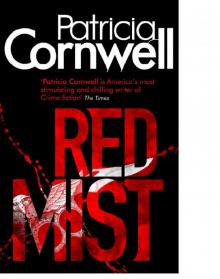 Red Mist
Red Mist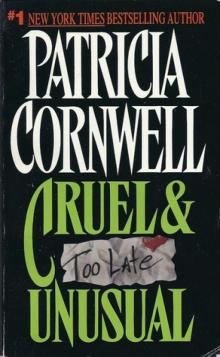 Cruel & Unusual
Cruel & Unusual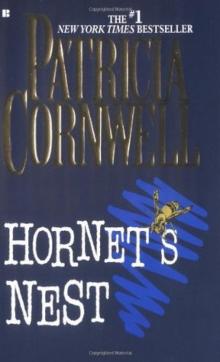 Hornet's Nest
Hornet's Nest Four Scarpetta Novels
Four Scarpetta Novels Scarpetta's Winter Table
Scarpetta's Winter Table Isle of Dogs
Isle of Dogs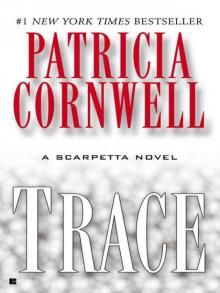 Trace
Trace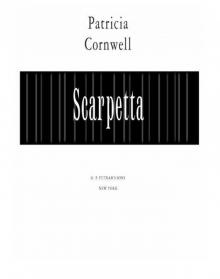 Postmortem
Postmortem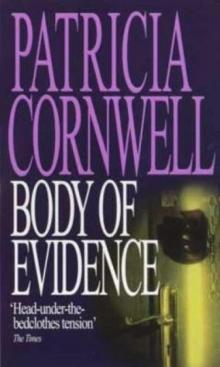 Body of Evidence ks-2
Body of Evidence ks-2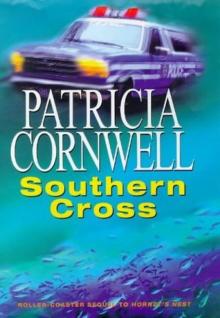 Southern Cross
Southern Cross All That Remains
All That Remains Point of Origin
Point of Origin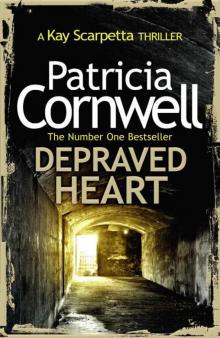 Depraved Heart
Depraved Heart Ruth, a Portrait: The Story of Ruth Bell Graham
Ruth, a Portrait: The Story of Ruth Bell Graham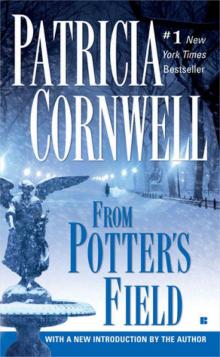 From Potter's Field
From Potter's Field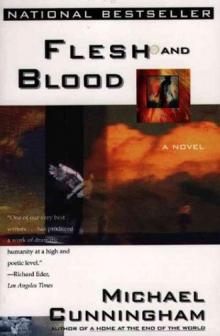 Flesh and Blood
Flesh and Blood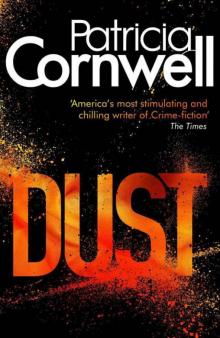 Dust
Dust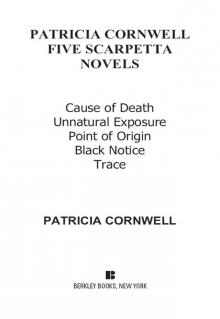 The Body Farm
The Body Farm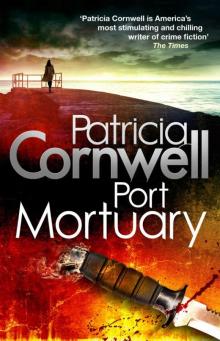 Port Mortuary
Port Mortuary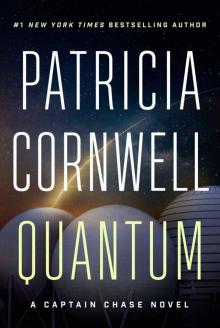 Quantum
Quantum Portrait of a Killer: Jack the Ripper - Case Closed
Portrait of a Killer: Jack the Ripper - Case Closed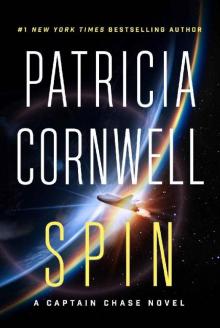 Spin (Captain Chase)
Spin (Captain Chase)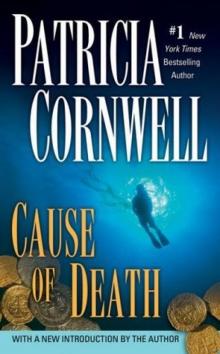 Cause of Death
Cause of Death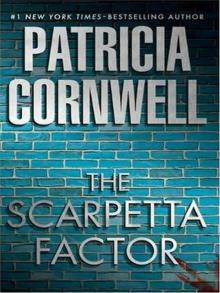 The Scarpetta Factor
The Scarpetta Factor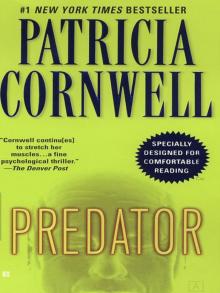 Predator
Predator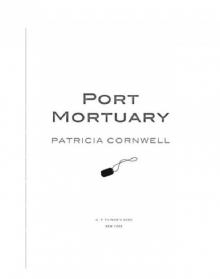 Scarpetta 18 - Port Mortuary
Scarpetta 18 - Port Mortuary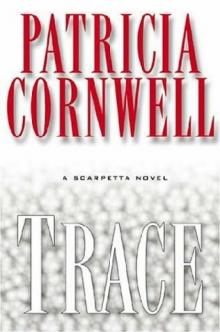 Trace ks-13
Trace ks-13 Portrait of a Killer
Portrait of a Killer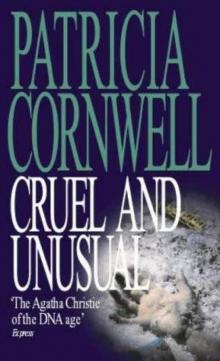 Cruel and Unusual ks-4
Cruel and Unusual ks-4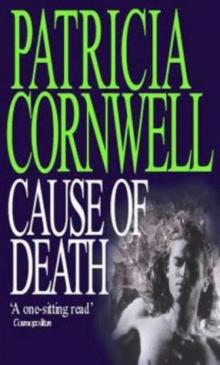 Cause Of Death ks-7
Cause Of Death ks-7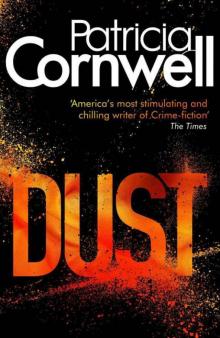 Dust ks-21
Dust ks-21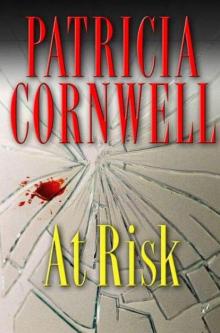 At Risk wg-1
At Risk wg-1 The Last Precinct ks-11
The Last Precinct ks-11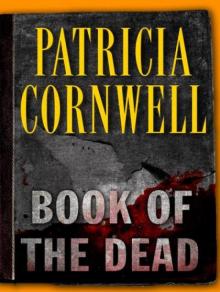 Book of the Dead ks-15
Book of the Dead ks-15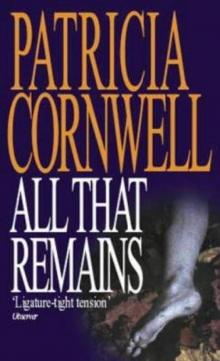 All That Remains ks-3
All That Remains ks-3 Ruth, a Portrait
Ruth, a Portrait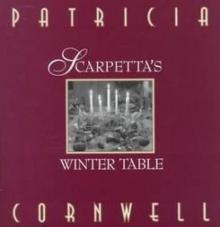 Scarpetta's Winter Table (kay scarpetta)
Scarpetta's Winter Table (kay scarpetta) From Potter's Field ks-6
From Potter's Field ks-6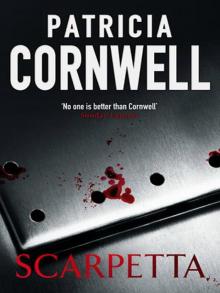 Scarpetta
Scarpetta Isle of Dogs jhabavw-3
Isle of Dogs jhabavw-3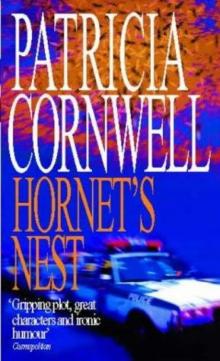 Hornet's Nest jhabavw-1
Hornet's Nest jhabavw-1 The Body Farm ks-5
The Body Farm ks-5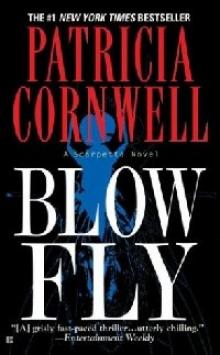 Blow Fly ks-12
Blow Fly ks-12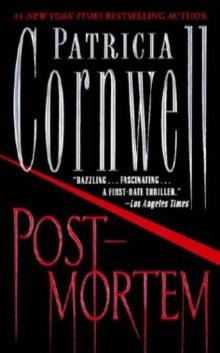 Post Mortem
Post Mortem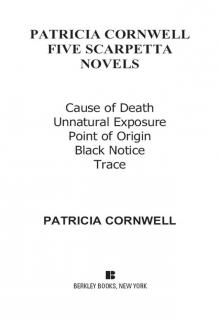 Five Scarpetta Novels
Five Scarpetta Novels Chasing the Ripper (Kindle Single)
Chasing the Ripper (Kindle Single)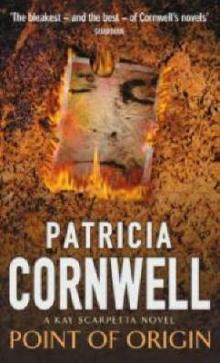 Point of Origin ks-9
Point of Origin ks-9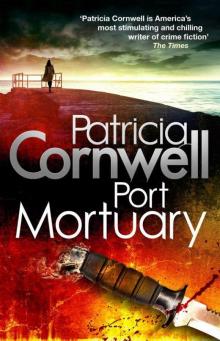 Port Mortuary (2010)
Port Mortuary (2010)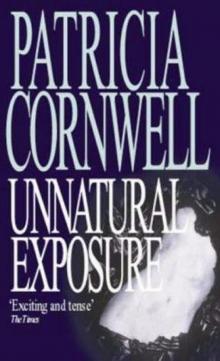 Unnatural Exposure ks-8
Unnatural Exposure ks-8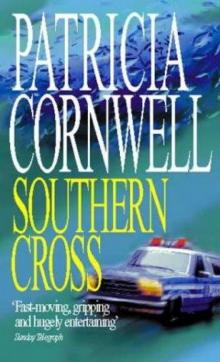 Southern Cross uhabavw-2
Southern Cross uhabavw-2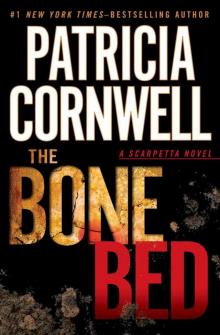 The Bone Bed ks-20
The Bone Bed ks-20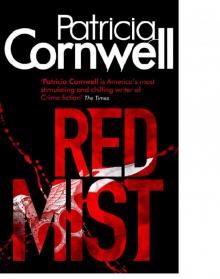 Red Mist ks-19
Red Mist ks-19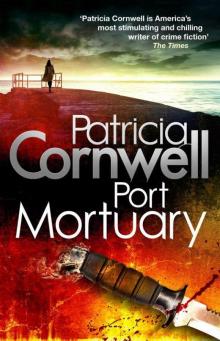 Port Mortuary (2010) ks-18
Port Mortuary (2010) ks-18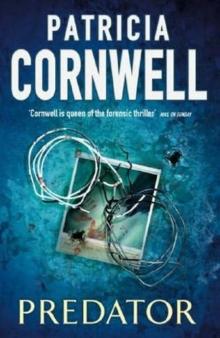 Predator ks-14
Predator ks-14